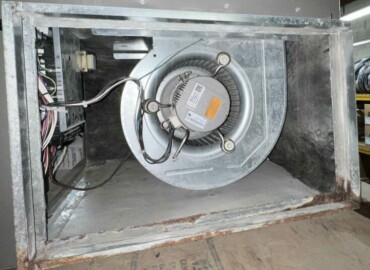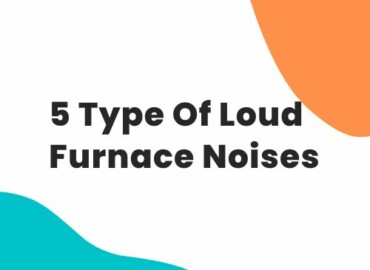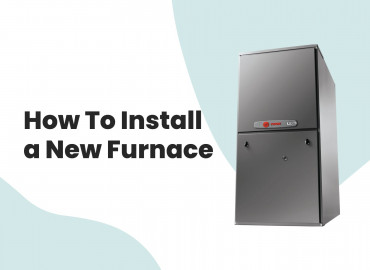How Do I Know When My Furnace Needs Replacing?
Having a hard time with furnace usage after 15 to 20 years is expected. Kudos to a reliable furnace running for such a long time! But, even though you’ve made an effort to regularly change filters, perform annual tune-ups, and replace worn parts when necessary, at some point, your furnace will reach the end of its working life. For this reason, you’ll take a thought about the replacement of your old furnace.
Presumably, the furnace will prompt you when a replacement should be made. However, the hints can vary in each case. Luckily, some signs can help you know if your best move is to replace or repair your furnace. Let’s get started!
Signs Your Furnace May Give You When to Replace It
Before you start scrolling down the given information, keep in mind that replacement is not the only option in every scenario. If your furnace has only lasted a few years of its working life, and unfortunately, this is the first time it’s had a problem, it’s a good idea to replace it.
At Smile HVAC, our professional technicians ensure your furnace will work at its best again. But if it’s not working like before, paying attention to the symptoms below alerts you that the repair is no longer the smart move.
1. 15 or more years of life span is completed
It is obvious that even if your furnace will complete 15 years of period, it will not stop working. But in most cases, completing 15 or more years is the right time when you may experience notable problems. However, an energy-efficient furnace will last 15 to 20 years, whether it is a gas or oil.
If you’ve decided to wait until your furnace reaches its 30th birthday, get ready to pay the cost in a more extended period on higher energy usage or repair bills. Typically, however, once the furnace surpasses the 15-year mark, replacement is considered necessary.
After that period, you may get headaches as energy-efficiency features become less effective and components begin to wear out or corrode. Additionally, a unit that previously ran smoothly may begin to require more servicing and maintenance to keep it running.
Because of all these reasons, Smile HVAC experts recommend that homeowners take furnace replacement seriously once their furnace is 15 years old, even if they don’t need it yet. Getting early-stage characterization can be beneficial for you to decide on the size and type of furnace and funds accordingly.
2. Furnace requiring frequent repairs
Suppose it’s snowing outside, and you turn on the thermostat to reach a desirable temperature. Your furnace starts running, but unfortunately, nothing happens, or it is not working at all. However, this is not a big deal if it acts like this once over several years. But if the furnace begins to demand calling a technician every season for routine repairs and inspections or starts malfunctioning so often, it may be wise to consider a replacement.
The repair cost will be less than that of replacing the entire unit, while the repair bill can typically be in the few bucks, and the replacement expense can be in the thousands of dollars range. Check the cost of your repair bills to make sure furnace replacement is worth the money. If your repair bill is around 20 to 30% of the price, plus the furnace is more than 15 years old, you are suggested to go with replacement.
3. Unevenly heat within the property
A well-working furnace can heat every nook and corner of your property evenly. However, over time, it may become difficult for the furnace to deliver the same amount of air to every room in the house. Sometimes, the matter can be something other than age. If your furnace is too large or too small than necessary, problems can arise when heating.
With a too-large furnace, you will experience frequent switching on and off, resulting in the correct amount of heat not being delivered to distant rooms. On the other hand, a smaller furnace may struggle to generate heat, leaving some areas cooler while others remain hotter.
To determine whether it may be a good time to replace the furnace, make sure that your vents and ducts are not leaking. Call a trained or SMO Energy’s Energy-certified technician available at Smile HVAC to assess your furnace condition. After evaluating the condition, our HVAC experts can help determine what the best option to go with is: repair or replacement.
4. Instant hike in heating bills
Furnaces generate heat by burning fuel, either propane gas or heating oil. A large number of the population thinks that 100% of the energy is entirely dedicated to generating heat. But in reality, even in the most efficient gas or oil furnaces, the % is below 100%.
In general, if your furnace is too old, it will be less efficient. The reason for being less energy efficient is because of the design of previous furnace models, which are generally not as efficient as the designs of advanced furnaces. Another reason for becoming less energy efficient is the wear and tear of components and systems over time.
The efficiency of the furnace is measured in AFUE or Annual Fuel Utilization Efficiency. If your furnace has a high AFUE rating, it will likely be more efficient. For a residential furnace, the minimum efficiency rating ranges from 78 to 80.
An immediate increase in utility bills indicates that the furnace is losing energy efficiency. If the furnace becomes old, you would be better off replacing it with an energy-efficient model from a reputed brand. You’ll save thousands of dollars in the long run on energy bills and repair bills.
5. The furnace is making some annoying noise
When a furnace is working, it makes some kind of noise. As the burner turns on and the fuel ignites, it will likely hum. Your furnace may make a crackling sound as air moves through ducts within the property. Once the air cycle is over, you may hear pinging or popping sounds as the ducts cool.
These sounds can be a cause for concern. For instance, if your furnace emits a loud bang occasionally, it could be a sign that fuel has built up in the unit and ignited at once when the furnace is turned on. Fuel formation can happen if the burners are clogged/dirty, or there is a valve problem. Due to accumulation, in some cases, the heat exchanger may corrode or burst, which may require a complete replacement of the system or costly repairs.
The following are some common noises that could be coming from your furnace, and if so, it’s a hint that it’s time to replace it.
Rumbling
Your furnace may cause rumbling noise because the air passes via the ducts or as the fuel ignites. But if this sound is loud and persistent, it could be a sign that there is a problem with the ignition system or burner.
Whining
A high-frequency whine sound can indicate trouble within the furnace. A good expert HVAC technician can assess your furnace, find the cause of the whining noise, and advise what to do next.
Shrieking
A loud clanging or clinking sound of metal may mean something has fallen out of place, broken, or otherwise become loose. Depending on the degree of the damage, a new furnace may be your best option.
Moisture problem inside the house
Improper amount of moisture or humidity can affect indoor comfort levels. When indoor air is too humid, mold can grow, causing shortness of breath and respiratory illness. The higher the humidity levels, the higher the risk of the home’s structures and walls rotting and stains forming on the ceiling and walls.
Some pests are more likely to invade damp homes and prefer dampness. If humidity levels are low, this will also be a concern. Dry air in the environment can dry out the skin, causing it to itch and form flakes and dry out the nasal passages, causing breathing problems.
Getting a new furnace helps deal with the moisture problem compared to other models. In cold winter, a dry home can benefit from a furnace by improving indoor air quality and comfort levels. Choosing a newer model that has a built-in humidifier can help solve this moisture problem.
6. The furnace is starting to look different.
As the years pass, your furnace loses its shiny appearance. At some point, it may also begin to crack or break. Changes you may notice in appearance include:
- Soot spatter: Incomplete combustion can cause soot. This may be resolved by inspecting the furnace and cleaning it thoroughly. Your HVAC specialist may suggest replacement based on the overall condition and age of the system.
- Rust: Your furnace can rust when metal parts come in contact with combustion gases, further weakening the furnace profile. In addition, it can create cracks, increasing the likelihood of leaks and other problems. In such a situation, consider installing a new furnace.
- Cracks: Excessive corrosion or having issues with the heat exchanger can lead to cracks in a furnace. It doesn’t matter how big or small the crack in your furnace is, it can be a cause for concern. If you see this, call our experts to inspect the situation and explain what steps have been taken.
Conclusion
Hopefully, you have been aware of the symptoms and signs your furnace can tell you that you need to install a new one rather than repair it. If you are still unsure whether it’s the right time to replace or repair your furnace, have a quick discussion with our HVAC specialist at Smile HVAC. Thank you!



